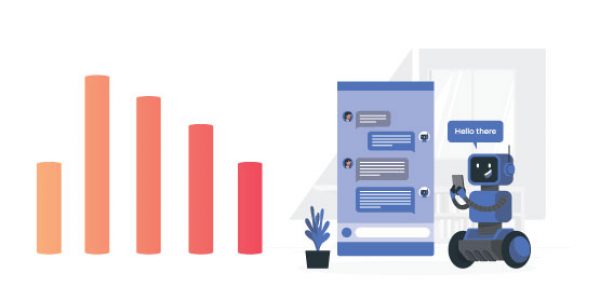Which is easier, getting new clients or retaining existing clients?
It depends on your product, your competition and your internal processes (Sales and customer success) However, if you can make your clients stick with your product, you have a better chance than most of creating a successful business.
This is where the customer churn rate comes into play. It’s a crucial metric for evaluating the company’s overall performance.
So, what is Customer Churn Rate?
Investopedia defines, churn rate as “It is the rate at which customers stop doing business with an entity. It is most commonly expressed as the percentage of service subscribers who discontinue their subscriptions within a given period. For a company to expand its clientele, its growth rate (measured by the number of new customers) must exceed its churn rate.”
Of course, no matter how much effort you put to keep your clients happy, some attrition or churn is unavoidable. Customers may stop doing business with you for several reasons that are beyond your control.
However, a high customer churn rate will affect the decisions you make for your company as well as your sales. If you want to grow your subscription-based market, the number of new customers you get per month must be higher than the number of customers who leave.
Revenue Churn Rate
The customer churn rate is not the only metric you should keep track of. Check how much revenue you lose in addition to how many clients you lose over time.
Not all disgruntled customers will leave right away. Instead, they may downgrade to a low-tier package or use the services to a smaller extent. As a result, you will get less revenue from the customer, or, in other words, a reduced customer lifetime value (LTV).
You don’t lose clients in this case, but you do see less revenue. You’ve fallen down the rabbit hole. You are gaining more clients, and your customer churn rate is decreasing, but your revenue seems to be plateaued.
If your revenue churn rate continues to increase, it’s an indication that people aren’t seeing enough value in their current contract and are switching to cheaper options or cancelling the service. Alternatively, this could mean that potential customers sign up for more affordable options, while current customers who are paying for more expensive plans begin to churn.
Factors Affecting Churn Rate
The churn rate helps you to see the consequences of your decisions right away. That’s a whole new ballgame determining how much of that should be due to various factors. It’s impossible to assume if a spike in churn rate is due to this or that. It’s still an educated guess, more or less.
Some of the common factors that influences churn rate are:
Customer satisfaction – When something goes wrong, people who are satisfied with your current service are less likely to cancel.
Customer delight – It is similar to strong customer service, but it is much more difficult to get. It’s the process of going the extra mile and giving the customer something extra. It’s the “WoW” factor!
Switching costs – The higher the cost of switching to a competitor, the less likely a customer is to switch. This includes both the costs of implementation and the costs of training staff.
Value for money – Customers would be unable to justify paying for your product if you fail to show sufficient value.
It’s difficult to tell what degree of churn rate is acceptable when dealing with these factors. The optimum churn rates can vary depending on the market you’re in and the kind of customer base you have B2C or B2B.
However, there is one cardinal rule that applies to all businesses. Your ultimate target is to get a negative churn rate.
How to Decrease Churn Rate?
Reducing customer churn rate is a top priority for SaaS and B2B businesses, particularly because this metric has a direct effect on revenue. According to an Econsultancy report, 82% of businesses agree that customer retention is less expensive than acquisition.
Despite the significant importance business leaders put on retention, the majority of marketers expend more time on the acquisition, according to the survey. This strategy, however, has several flaws. Instead, businesses should treat the process as a three-pronged approach that relies on marketing, customer service, and sales all working together to achieve long-term results. Businesses can minimise customer churn rates by focusing on the customer experience after a client has progressed through the sales funnel.
Here are four main strategies for lowering customer churn rate and improving consumer retention:
- Effective Onboarding
The first step in minimising churn rate is to match client expectations right from the onboarding phase and ensuring that clients are well informed about their product features and their support and solutions. Onboarding processes often rely on training and improvements, but business leaders can also use this as an opportunity to learn about the customer’s goals and develop actions to meet those goals, including best practices. Companies can encourage longevity in their customer relationships by providing outstanding customer service from the outset. For SaaS businesses, onboarding is even more crucial.
- Proactive Communication
Most businesses often foster reactive customer experiences by waiting for a customer to approach their support team before engaging in a conversation. Instead, businesses should use proactive communication tactics to interact with consumers and understand their needs. Take the opportunity to look at how a consumer uses the product and how they interact with customer support. Communicate with clients regularly to give advice and pointers on how to use the product more efficiently, and initiate conversations with consumers who aren’t using the platform as often as they should be. Finally, with new features and updates, implement an effective communication strategy.
- Live Chat for Actionable Research
Customer retention relies heavily on research, which can significantly minimise the churn rate. Businesses can gain useful insight such as where customer relationships have deteriorated and the reasons that contribute to churn by using the right online support tools such as Live Chat. Businesses can use this information to improve their product and retain long-term partnerships. Furthermore, businesses should research what aspects of the customer interactions contributed to customer retention.
- Exemplary Support
Finally, excellent customer support is critical for generating positive outcomes that lead to long-term customer relationships. According to an Accenture report, 53% of Americans switched providers due to poor support in at least one sector, and 80% of this churn could be prevented through better resolution. Businesses who use specialised B2B customer support tools such as Live Chat can provide customers with the answers they need quickly. Businesses can minimise customer churn and offer excellent customer support by using a collaborative, interactive strategy that allows customers to access several channels for assistance.
What is your current status of your customer or revenue churn? Are you’re doing something about it? Need help with reducing your churn rate? We at Chat Metrics would love to hear from you because there are never enough viable options to try out when it comes to reducing customer churn.
If you are looking for more knowledge about CaaS and how we deliver a 25% increase in conversion rates in 30 days reducing the overall customer churn, visit Chat Metrics.
To see if you qualify for our 25% guaranteed increase in conversions, click here and provide your information. The more information you provide, the quicker we can respond.








